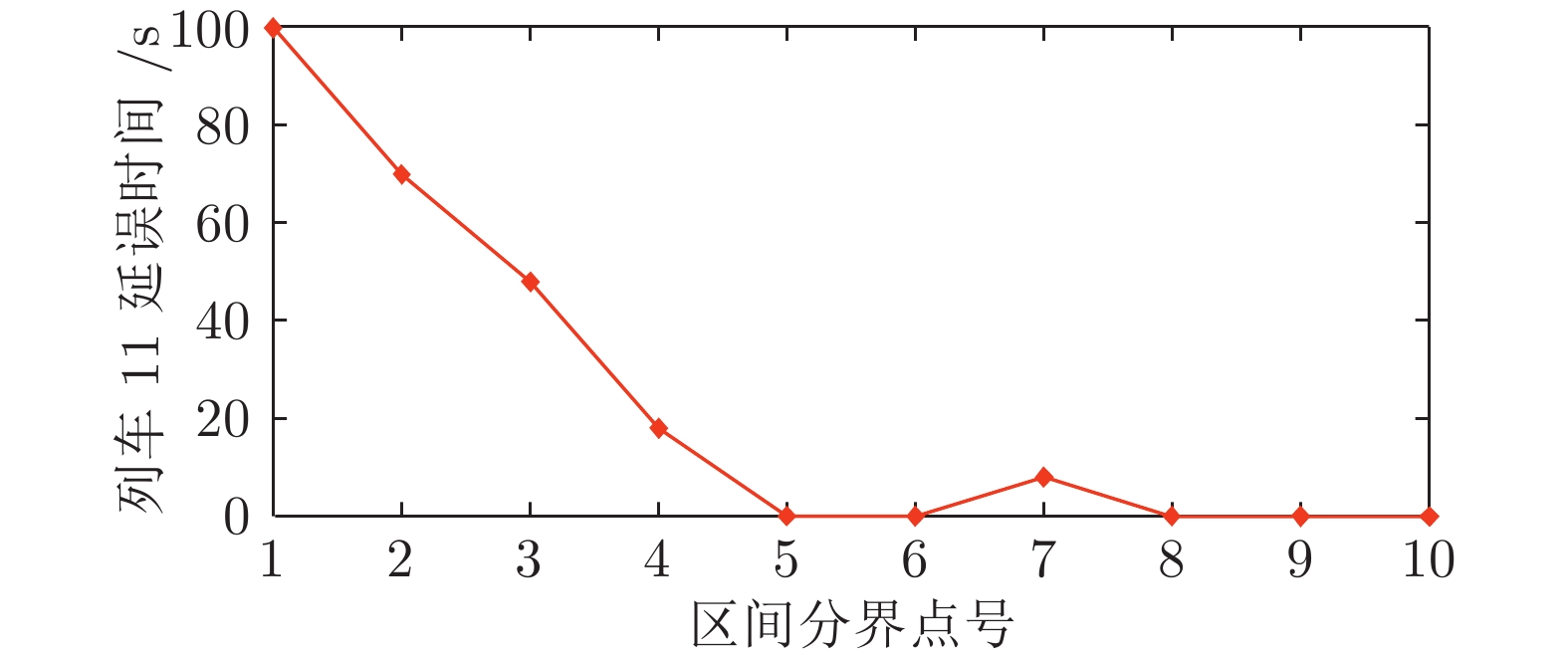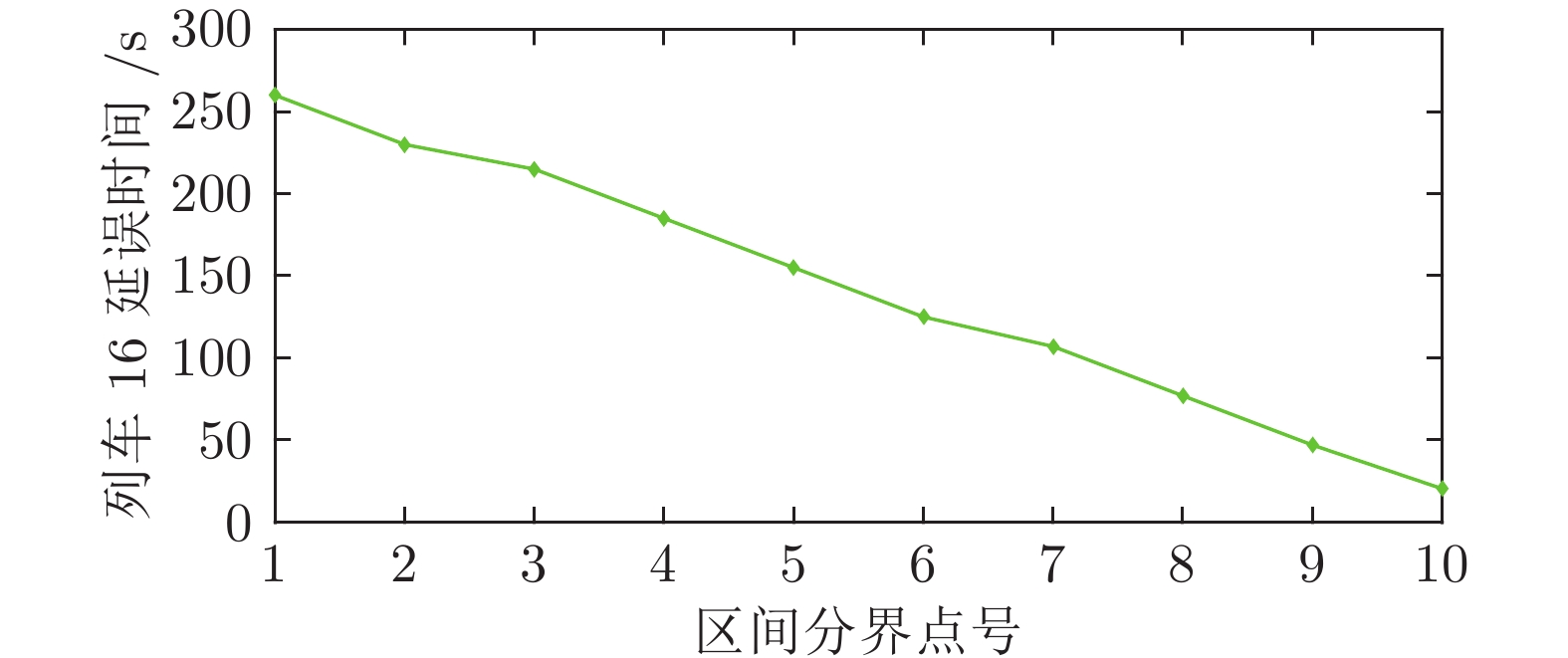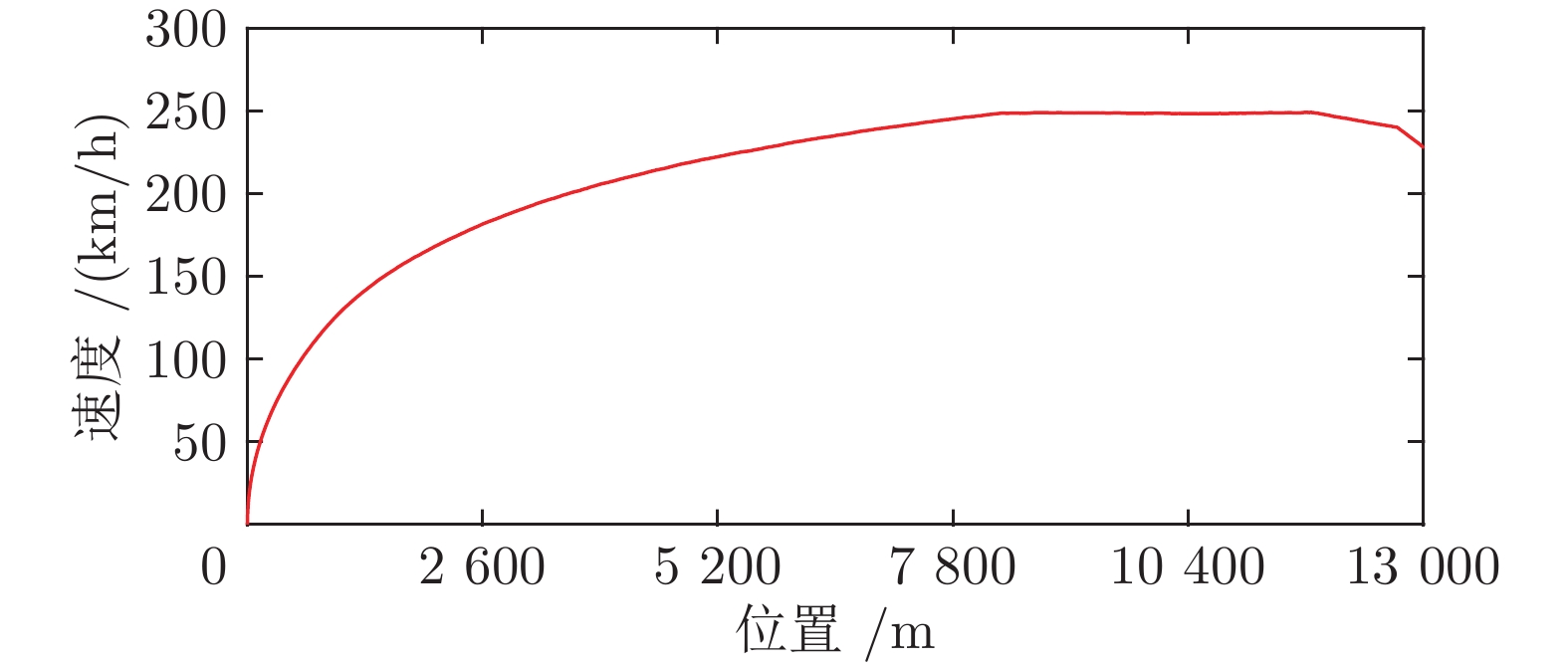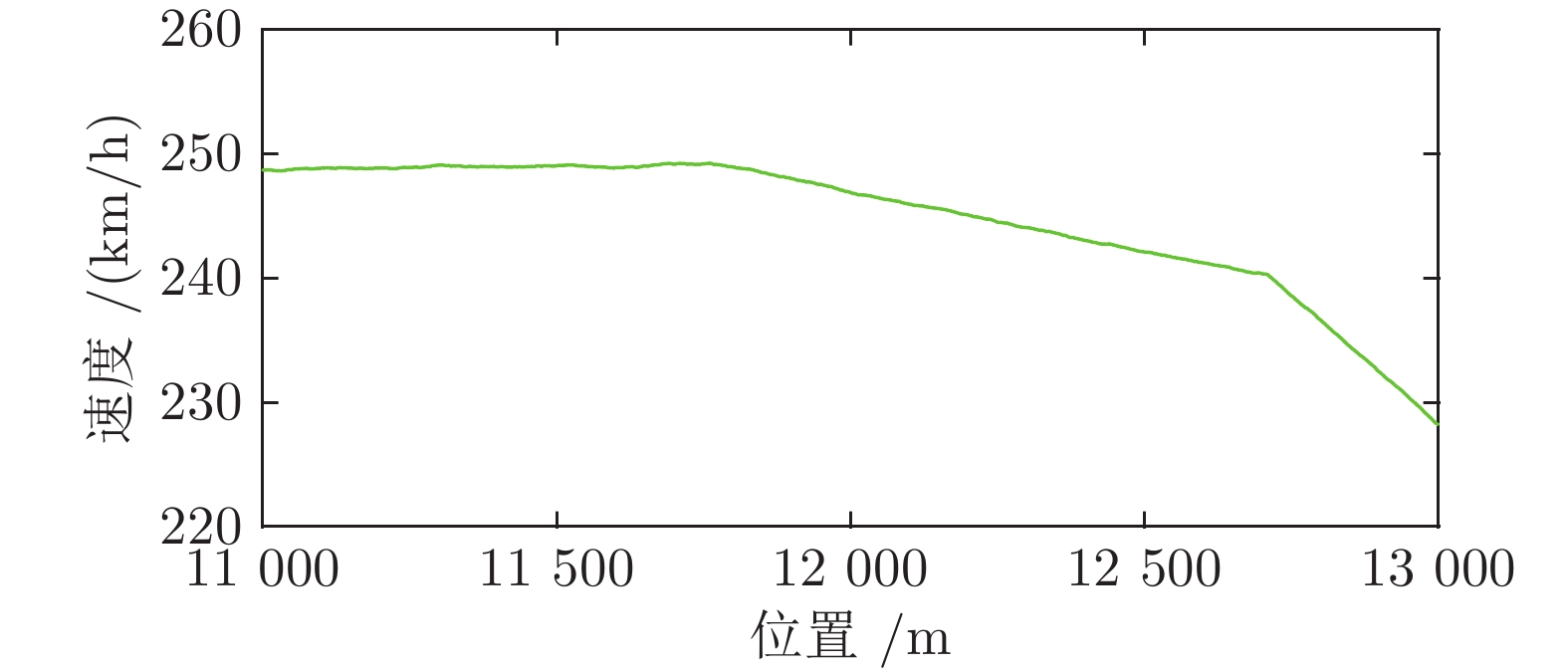|
[1]
|
孙亚华. 高速列车运行控制与动态调度一体化的研究[硕士学位论文], 北京交通大学, 2015.Sun Ya-Hua. The Integration Study of High-Speed Train Operation Control and Scheduling [Master thesis], Beijing Jiaotong University, 2015.
|
|
[2]
|
2 Gao S G, Hou Y H, Dong H R, Stichel S, Ning B. High-speed trains automatic operation with protection constraints: a resilient nonlinear gain-based feedback control approach. IEEE/CAA Journal of Automatica Sinica, 2019, 6(4): 992−999 doi: 10.1109/JAS.2019.1911582
|
|
[3]
|
3 Gao S G, Dong H R, Ning B, Zhang Q. Cooperative prescribed performance tracking control for multiple high-speed trains in moving block signaling system. IEEE Transactions on Intelligent Transportation Systems, 2019, 20(7): 2740−2749 doi: 10.1109/TITS.2018.2877171
|
|
[4]
|
4 Albrecht A R, Howlett P G, Pudney P J, Vu X. Energy-efficient train control: from local convexity to global optimization and uniqueness. Automatica, 2013, 49(10): 3072−3078 doi: 10.1016/j.automatica.2013.07.008
|
|
[5]
|
5 Yan X H, Cai B G, Ning B, Wei S G. Moving horizon optimization of dynamic trajectory planning for high-speed train operation. IEEE Transactions on Intelligent Transportation Systems, 2016, 17(5): 1258−1270 doi: 10.1109/TITS.2015.2499254
|
|
[6]
|
6 Yang H, Zhang K P, Liu H E. Online regulation of high speed train trajectory control based on T-S fuzzy bilinear model. IEEE Transactions on Intelligent Transportation Systems, 2016, 17(6): 1496−1508 doi: 10.1109/TITS.2015.2497320
|
|
[7]
|
7 Li L, Dong W, Ji Y D, Zhang Z K, Lang T. Minimal-energy driving strategy for high-speed electric train with hybrid system model. IEEE Transactions on Intelligent Transportation Systems, 2013, 14(4): 1642−1653 doi: 10.1109/TITS.2013.2265395
|
|
[8]
|
8 Fang W, Yang S X, Yao X. A survey on problem models and solution approaches to rescheduling in railway networks. IEEE Transactions on Intelligent Transportation Systems, 2016, 16(6): 2997−3016
|
|
[9]
|
9 Binder S, Maknoon Y, Bierlaire M. The multi-objective railway timetable rescheduling problem. Transportation Research Part C Emerging Technologies, 2017, 78: 78−94 doi: 10.1016/j.trc.2017.02.001
|
|
[10]
|
10 Dong H R, Zhu H N, Li Y D, Lv Y S, Gao S G, Zhang Q, et al. Parallel intelligent systems for integrated high-speed railway operation control and dynamic scheduling. IEEE Transactions on Cybernetics, 2018, 48(12): 3381−3389 doi: 10.1109/TCYB.2018.2852772
|
|
[11]
|
11 Zheng Y J. Emergency train scheduling on Chinese high-speed railways. Transportation Science, 2018, 52(5): 1077−1091 doi: 10.1287/trsc.2017.0794
|
|
[12]
|
12 Krasemann J T. Design of an effective algorithm for fast response to the re-scheduling of railway traffic during disturbances. Transportation Research Part C Emerging Technologies, 2012, 20(1): 62−78 doi: 10.1016/j.trc.2010.12.004
|
|
[13]
|
13 Shakibayifar M, Sheikholeslami A, Corman F. A simulation-based optimization approach to rescheduling train traffic in uncertain conditions during disruptions. Scientia Iranica, 2018, 25(2): 646−662
|
|
[14]
|
14 Yang L X, Qi J G, Li S K, Gao Y. Collaborative optimization for train scheduling and train stop planning on high-speed railways. Omega, 2016, 64: 57−76 doi: 10.1016/j.omega.2015.11.003
|
|
[15]
|
Zhou W L, Tian J L, Qin J, Deng L B, Wei T J. Optimization of multiperiod mixed train schedule on high-speed railway. Discrete Dynamics in Nature and Society, 2015, Article ID: 107048
|
|
[16]
|
16 Hou Z P, Dong H R, Gao S G, Nicholson G, Chen L, Roberts C. Energy-saving metro train timetable rescheduling model considering ATO profiles and dynamic passenger flow. IEEE Transactions on Intelligent Transportation Systems, 2019, 20(7): 2774−2785 doi: 10.1109/TITS.2019.2906483
|
|
[17]
|
17 Yan X H, Cai B, Ning B, Wei S G. Online distributed cooperative model predictive control of energy-saving trajectory planning for multiple high-speed train movements. Transportation Research Part C Emerging Technologies, 2016, 69: 60−78 doi: 10.1016/j.trc.2016.05.019
|
|
[18]
|
范家璐, 张也维, 柴天佑. 一类工业过程运行反馈优化控制方法. 自动化学报, 2015, 41(10): 1754−176118 Fan Jia-Lu, Zhang Ye-Wei, Chai Tian-You. Optimal operational feedback control for a class of industrial processes. Acta Automatica Sinica, 2015, 41(10): 1754−1761
|
|
[19]
|
19 Li S K, Zhou X S, Yang L X, Gao Z Y. Automatic train regulation of complex metro networks with transfer coordination constraints: a distributed optimal control framework. Transportation Research Part B Methodological, 2018, 117: 228−253 doi: 10.1016/j.trb.2018.09.001
|
|
[20]
|
20 Li S K, Yang L X, Gao Z Y. Efficient real-time control design for automatic train regulation of metro loop lines. IEEE Transactions on Intelligent Transportation Systems, 2019, 20(2): 485−496 doi: 10.1109/TITS.2018.2815528
|
|
[21]
|
21 Wang X, Li S K, Su S, Tang T. Robust fuzzy predictive control for automatic train regulation in high-frequency metro lines. IEEE Transactions on Fuzzy Systems, 2019, 27(6): 1295−1308 doi: 10.1109/TFUZZ.2018.2877593
|
|
[22]
|
22 Van Breusegem S, Campion G, Bastin G. Traffic modeling and state feed back control for metro lines. IEEE Transactions on Automatic Control, 1991, 36(7): 770−784 doi: 10.1109/9.85057
|
|
[23]
|
23 Su S, Tang T, Li X, Gao Z Y. Optimization of multitrain operations in a subway system. IEEE Transactions on Intelligent Transportation Systems, 2014, 15(2): 673−684 doi: 10.1109/TITS.2013.2285737
|
|
[24]
|
Zhao H, Dai X W, Zhang M, Zhang Q. An event-triggered robust cruise control strategy for multiple high-speed trains. In: Proceedings of the 30th Chinese Control and Decision Conference. Shenyang, China: IEEE, 2018. 2041−2046
|
|
[25]
|
Tang H Y, Ge X C, Liu Q Q, Wang Q Y. Robust H∞ control of high-speed trains with parameter uncertainties and unpredictable time-varying delays. In: Proceedings of the 35th Chinese Control Conference. Chengdu, China: IEEE, 2016. 10173−10178
|
|
[26]
|
26 Dong H R, Gao S G, Ning B, Li L. Extended fuzzy logic controller for high speed train. Neural Computing and Applications, 2013, 22(2): 321−328 doi: 10.1007/s00521-011-0681-8
|
|
[27]
|
27 Zhou Y H, Zhang Z L. High-speed train control based on multiple-model adaptive control with second-level adaptation. Vehicle System Dynamics, 2014, 52(5): 637−652 doi: 10.1080/00423114.2014.887209
|
|
[28]
|
28 Ji H H, Hou Z S, Zhang R K. Adaptive iterative learning control for high-speed trains with unknown speed delays and input saturations. IEEE Transactions on Automation Science and Engineering, 2016, 13(1): 260−273 doi: 10.1109/TASE.2014.2371816
|
|
[29]
|
29 Tang H Y, Wang Q Y, Feng X Y. Robust stochastic control for high-speed trains with nonlinearity, parametric uncertainty, and multiple time-varying delays. IEEE Transactions on Intelligent Transportation Systems, 2018, 19(4): 1027−1037 doi: 10.1109/TITS.2017.2710138
|
|
[30]
|
徐君, 张国良, 曾静, 杜柏阳, 贾枭. 高阶离散多智能体系统在参数不确定和带外部干扰下的鲁棒H∞一致性控制. 自动化学报, 2017, 43(10): 1850−185730 Xu Jun, Zhang Guo-Liang, Zeng Jing, Du Bo-Yang, Jia Xiao. Robust H∞ consensus control for high-order discrete time multi-agent systems with parameter uncertainties and external disturbances. Acta Automatica Sinica, 2017, 43(10): 1850−1857
|
|
[31]
|
俞立. 鲁棒控制——线性矩阵不等式处理方法. 北京: 清华大学出版社, 2002. 41−59Yu Li. Robust Control — Linear Matrix Inequality Method. Beijing: Tsinghua University Press, 2002. 41−59
|





 下载:
下载:







